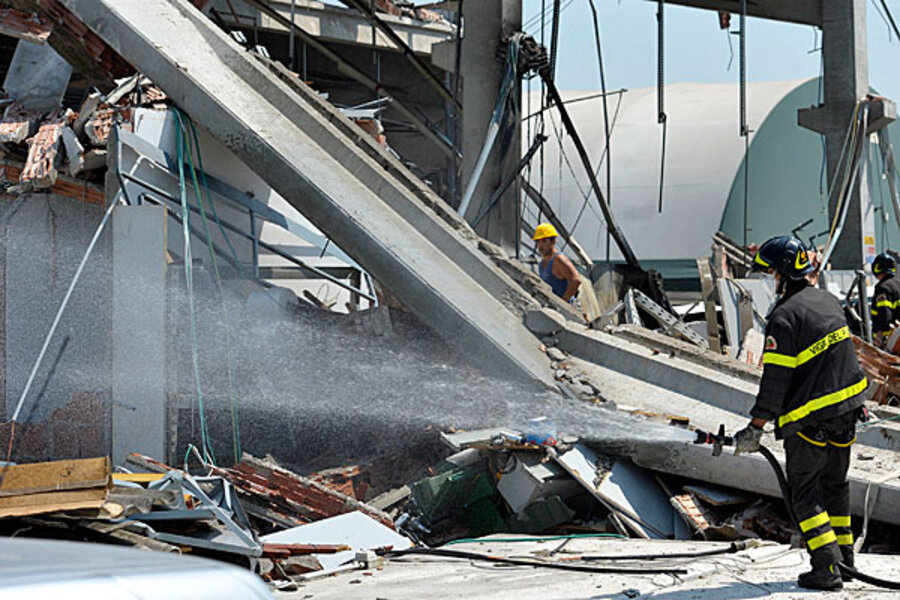Northern Italy struck by another earthquake
| Milan
An earthquake struck northern Italy on Tuesday, killing at least 10 people, damaging buildings and raising concern among thousands of residents still living in tents after a tremor shook the region just over a week ago.
Officials and a source from the Italian Red Cross said several people were trapped under the rubble of houses and warehouses in the Emilia-Romagna region. Police said 10 people were confirmed dead but the toll was likely to rise.
The 5.8-magnitude quake struck near Modena and was felt across much of northern and central Italy.
"The situation is very serious, some people are stuck under the rubble," Alberto Silvestri, the mayor of San Felice sul Panaro, on e of the towns near the epicentre, to ld SkyTG24.
IN PICTURES: Earthquake in Italy
Aftershocks were felt across northern Italy on Tuesday, including in Modena, Brescia, and Milan.
Prime Minister Mario Monti said: "I want to assure everyone that the state will do all that it must do, all that is possible to do, as fast as it can to guarantee the return to normality in a region so special, so important, so productive for Italy."
Seven people were killed in the previous quake on May 20 that had its epicentre not far from Modena.
That quake, which registered magnitude 6, destroyed hundreds of buildings, including ancient churches and castles, and forced more than 7,000 people to sleep outdoors in tents.
It also hit production of some of the area's most internationally famous produce, including Parmigiano Reggiano cheese. Farmers estimated the damage to agriculture in one of Italy's most fertile zones at more than 200 million euros.
On Tuesday, officials said operations to rescue people from the rubble had been hampered by disruption to the mobile phone network.
"The town has been largely damaged. There are people under the rubble, we don't know how many," a police officer from Cavezzo told Reuters.
Train services around Bologna, near Modena, were disrupted, media said, and schools and other public buildings had been evacuated as far south as Florence.
"We felt a very strong tremor," said Raffaella Besola, a resident of Bologna.
The U.S. Geological Survey said the epicentre of Tuesday's quake was less than 30 km (19 miles) from Modena, not far from where the quake hit just over a week ago.
A 3.8 magnitude earthquake was also felt through western Bulgaria on Tuesday, causing no casualties or serious damage, the National Geophysical Institute said.
The tremor had its epicentre near the town of Pernik, shaking buildings and causing residents to rush into the streets.
A 5.6 magnitude eartquake shook Bulgaria last Tuesday, centered about 25 km west of the capital Sofia. Damage was estimated at more than 20 million levs ($12.82 million).
(Additional reporting by Antonella Cinelli and Steve Scherer in Rome, Stephen Jewkes in Milan; Editing by Janet Lawrence)





